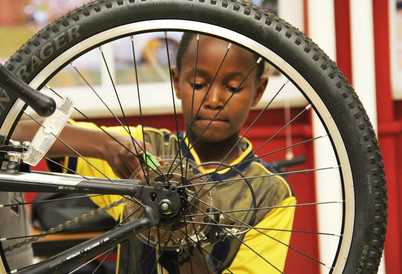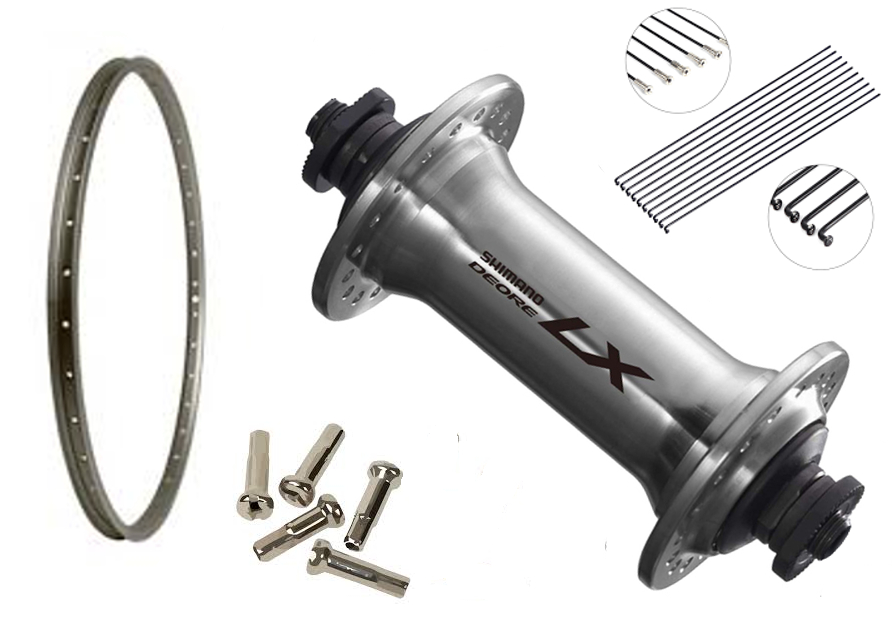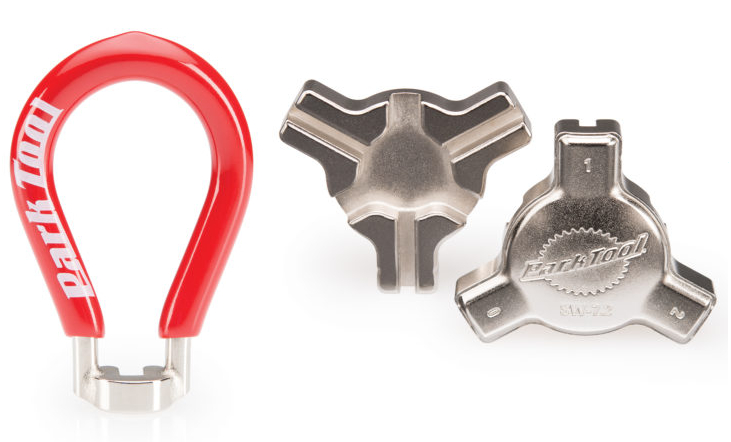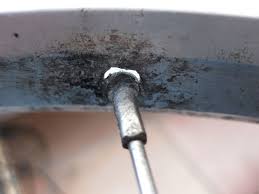by John Brown, HaveFunBiking.com
Wheel truing is a great way to take care of your bike while making it easier to ride. When you start adjusting your wheels, it’s important to know where to start. Read on below for details on what makes your wheels work, and how to make them work better.
Wheel Truing and The Wheel Parts
Wheels are made up of four parts, the rim, the spokes, nipples, and the hub. The rim is the outside portion of a wheel that the tire mounts to. Nipples fit into the rim and thread onto the spokes and are the part of a wheel where you can adjust tension. Spokes are wire supports that stretch from the rim to the hub. Finally, the hub is where the wheel attaches to the bike, it houses bearings, supports the gears and in some cases a brake.
A wheel truing works by means of spoke tension. The tension on spokes is the force that suspends the hub (and by extension the bike and rider) inside the rim and tire. Spokes are attached to a centerline on the rim and one of two hub flanges that sit a few inches apart. Splitting the spokes between the left and right hub flanges triangulates the wheel’s tension and gives the wheel rotational and lateral stiffness. Splitting spokes between left and right flanges also allows rims to be “pulled” left or right by spoke tension to straighten a wheel.
Tools for Wheel Truing
Truing a wheel requires one special tool – a spoke wrench. Spoke wrenches are sized differently depending on the size of spoke nipple you have. When buying a spoke wrench, measure the nipple (standard square nipple sizes include 3.23mm/3.3mmm/3.45mm/3.96mm) or buy a multi-sized spoke wrench. Additionally, a truing stand is helpful (It’s a jig that holds the wheel in place and offers a gauge to help straighten the wheel) but not required.
Rim Material
Rims can be made from Wood, Steel, Aluminum, and Carbon fiber. Each material works differently and has its own pros and cons. Most likely, your rim is aluminum, which is a good thing. Aluminum is the easiest and most forgiving material to true.
Rim Condition
Truing a wheel is possible if the rim is in repairable shape. Things like large dents, cracks, excessive wear, and large bends make it impossible to straighten the wheel properly. By contrast, Small dings or warps of the wheel can easily be sorted out.
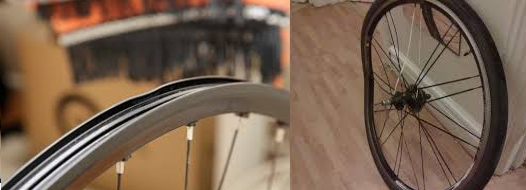
The Rim on the left has a small dent that could be repaired, while the rim on the right is beyond repair
Spoke Condition
Spokes are almost always made of stainless or high tensile steel. Because spokes are made of steel, they are incredibly durable and small bends or scratches aren’t a huge concern. In contrast, if you see large gouges or drastic bends, it’s best to replace that spoke (something I recommend you have a local bike shop do). Additionally, if there is excessive corrosion, the spokes may be too weak to support the rider. Also, be cognizant about uneven spoke tension. For example, if one side of the wheel has a high tension while the other side is loose, the wheel will be very difficult to true.
Nipple condition
Spoke nipples are made of either chrome plated brass or aluminum. Corrosion is one of the main concerns with spoke nipples. If a nipple is highly corroded, it might be difficult to turn, and eliminate the option of adjusting spoke tension. Before wheel truing bike, drop a small amount of oil where the spoke meets the nipple. Letting that oil soak into the threads will make truing your wheel easier.
How to True a Wheel
-True
Start by finding where the wheel is out of true. This can be done in a truing stand, or more easily between the brakes on your bike. Spin the wheel slowly to see where it gets closer the brake pads. To move the rim away from a brake pad you need to tighten an opposite side spoke, or loosen a near side spoke (see image). Also, when looking down on the rim, you will be turning the nipple to the left to tighten a spoke and the right loosen it (opposite of lefty loosy). Start by working in ¼ turn increments, meaning, don’t turn any nipple more than ¼ turn at a time. Work around the wheel, starting at the valve, and go around repeatedly until the wheel is straight.

To move the rim to the left, tighten the right side spokes and loosen the left side spokes
-Round
While you are working to make a wheel straight, be aware of how round it is as well. For the hops and dips that appear on a rim you should work in pairs of spokes (1 right, 1 left). Tightening spokes to eliminate hops, and loosen them to relieve dips.
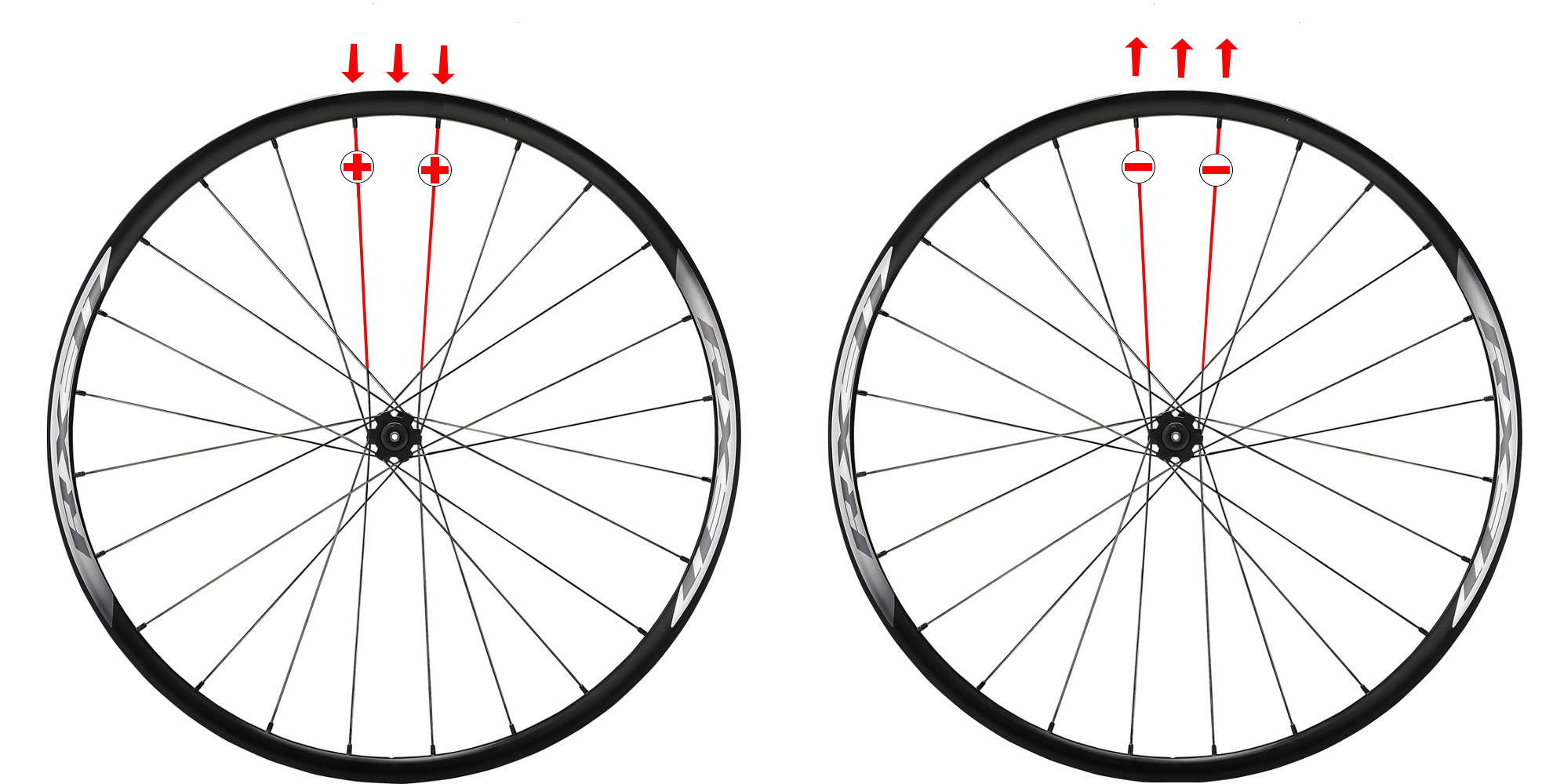
by tightening a pair of spokes you can “pull” a hop out of a rim (left) and by loosening them you can correct for some dents (right)
Good Enough is Good Enough
Once a wheel becomes knocked out of true it is no longer perfect. Therefore, it may not be possible to bring it all the way back to being perfectly again. Once spokes become very tight or very loose, that’s an indication you have reached the end of a wheel’s adjustment range. Until you are very comfortable truing a wheel, work slowly and deliberately. By making small changes, you are more likely to catch any small errors before they become large problems. Take your time and have fun with it.
